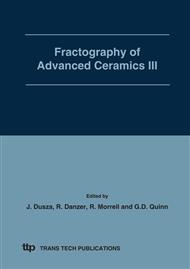p.123
p.128
p.137
p.145
p.154
p.161
p.168
p.176
p.185
Fractality of Simulated Fracture
Abstract:
The paper is focussed on numerical simulations of the fracture of a quasi-brittle specimen due to its impact onto a fixed rigid elastic plate. The failure of the specimen after the impact is modelled in two ways based on the physical discretization of continuum: via physical discrete elements and pseudo-particles. Advantages and drawbacks of both used methods are discussed. The size distribution of the fragments of the broken specimen resulting from physical discrete element model simulation follows a power law, which indicates the ability of the numerical model to identify the fractal nature of the fracture. The pseudo-particle model, on the other side, can successfully predict the kinematics of the fragments of the specimen under impact failure.
Info:
Periodical:
Pages:
154-160
Citation:
Online since:
March 2009
Authors:
Keywords:
Price:
Сopyright:
© 2009 Trans Tech Publications Ltd. All Rights Reserved
Share:
Citation:


